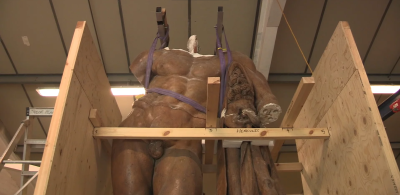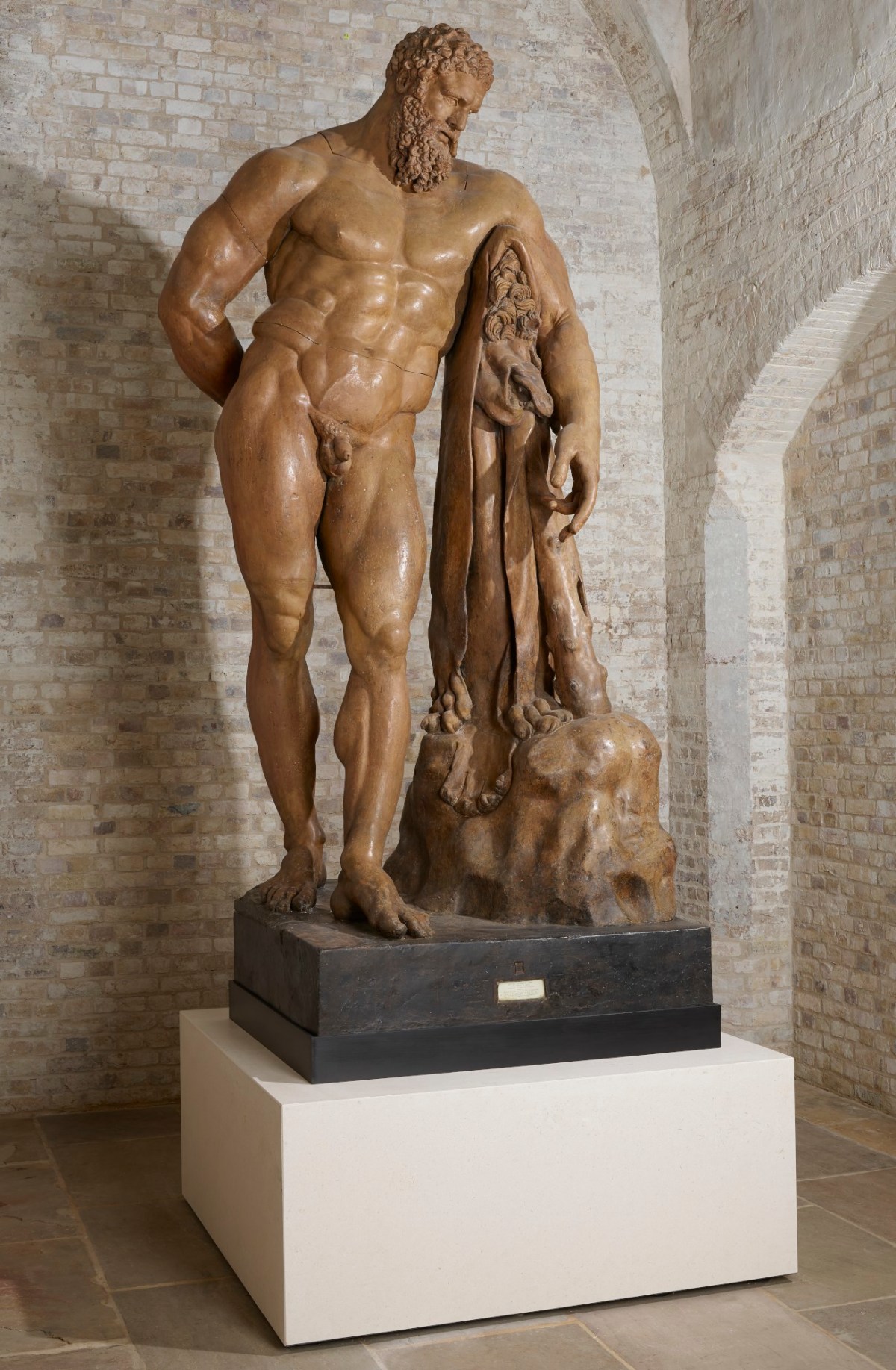
Glycon the Athenian and Lysippus, Cast of the Farnese Hercules, c.1790.
Plaster cast. 3270 mm x 1540 mm x 1150 mm, Weight: 1280 kg. © Photo: Royal Academy of Arts, London. Photographer: Prudence Cuming Associates Limited.
This image is not available to download. To licence this image for commercial purposes, contact our Picture Library at picturelibrary@royalacademy.org.uk
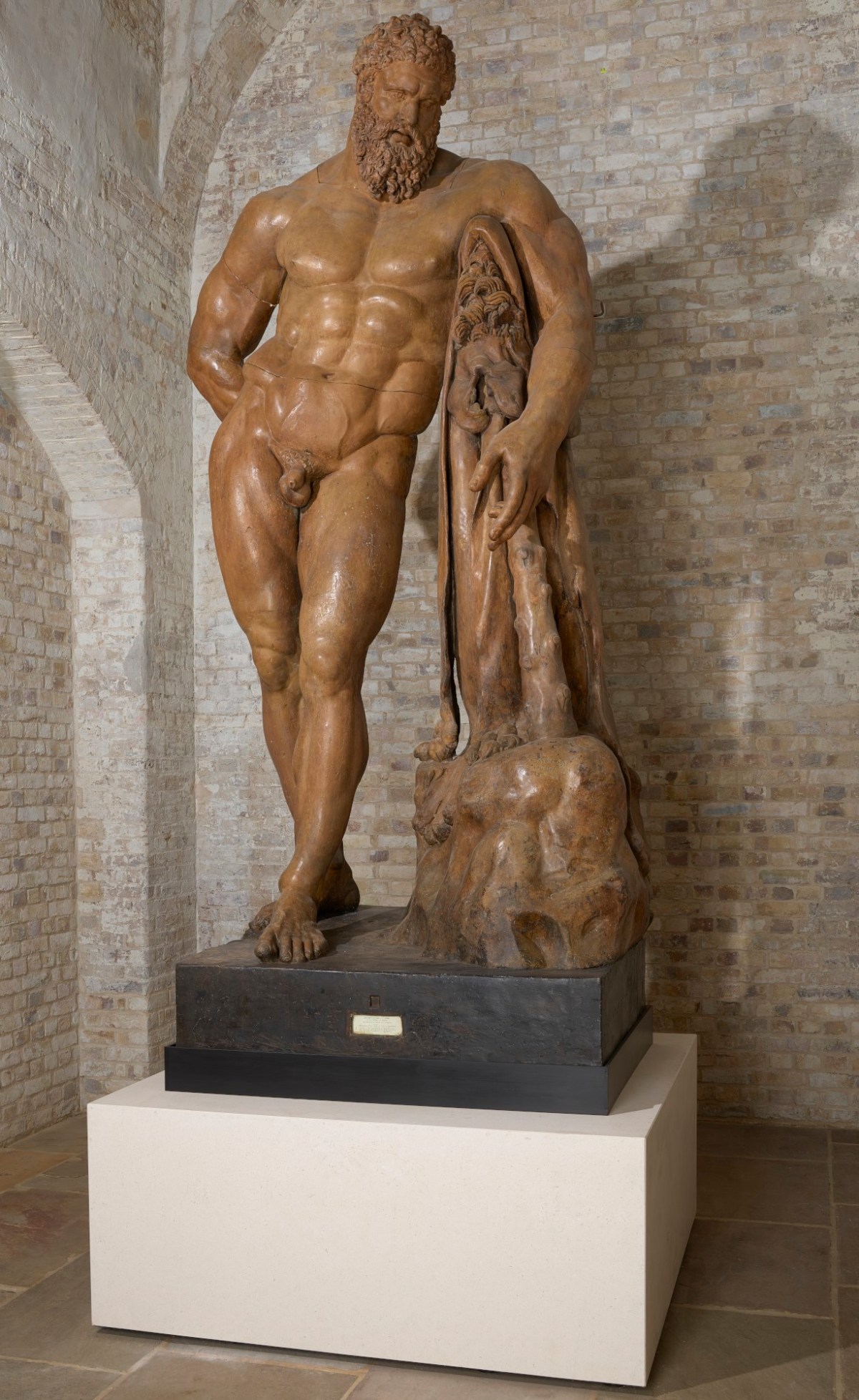
Glycon the Athenian and Lysippus, Cast of the Farnese Hercules, c.1790.
Plaster cast. 3270 mm x 1540 mm x 1150 mm, Weight: 1280 kg. © Photo: Royal Academy of Arts, London. Photographer: Prudence Cuming Associates Limited.
This image is not available to download. To licence this image for commercial purposes, contact our Picture Library at picturelibrary@royalacademy.org.uk

Glycon the Athenian and Lysippus, Cast of the Farnese Hercules, c.1790.
Plaster cast. 3270 mm x 1540 mm x 1150 mm, Weight: 1280 kg. © Photo: Royal Academy of Arts, London. Photographer: Prudence Cuming Associates Limited.
This image is not available to download. To licence this image for commercial purposes, contact our Picture Library at picturelibrary@royalacademy.org.uk
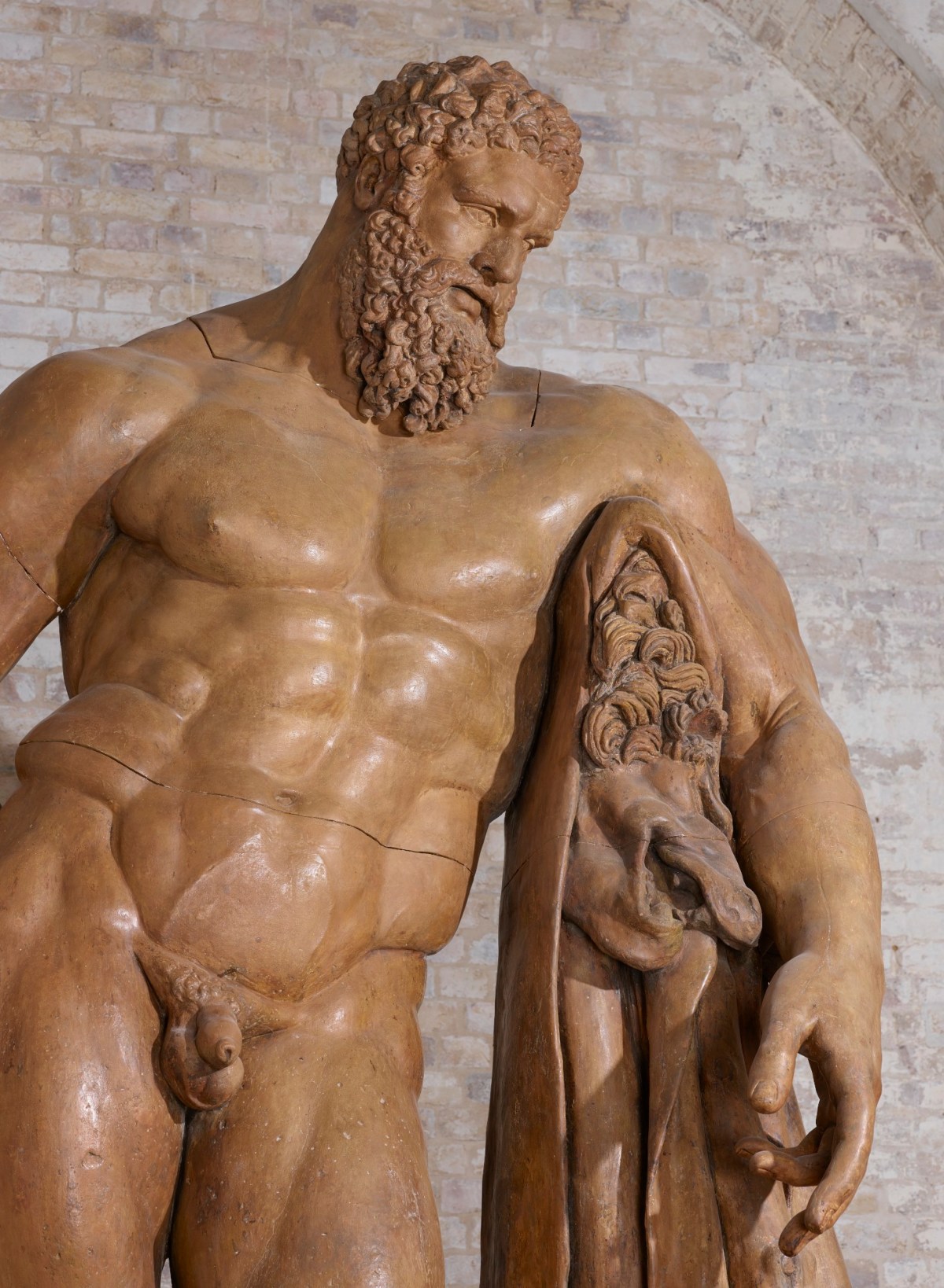
Glycon the Athenian and Lysippus, Cast of the Farnese Hercules, c.1790.
Plaster cast. 3270 mm x 1540 mm x 1150 mm, Weight: 1280 kg. © Photo: Royal Academy of Arts, London. Photographer: Prudence Cuming Associates Limited.
This image is not available to download. To licence this image for commercial purposes, contact our Picture Library at picturelibrary@royalacademy.org.uk
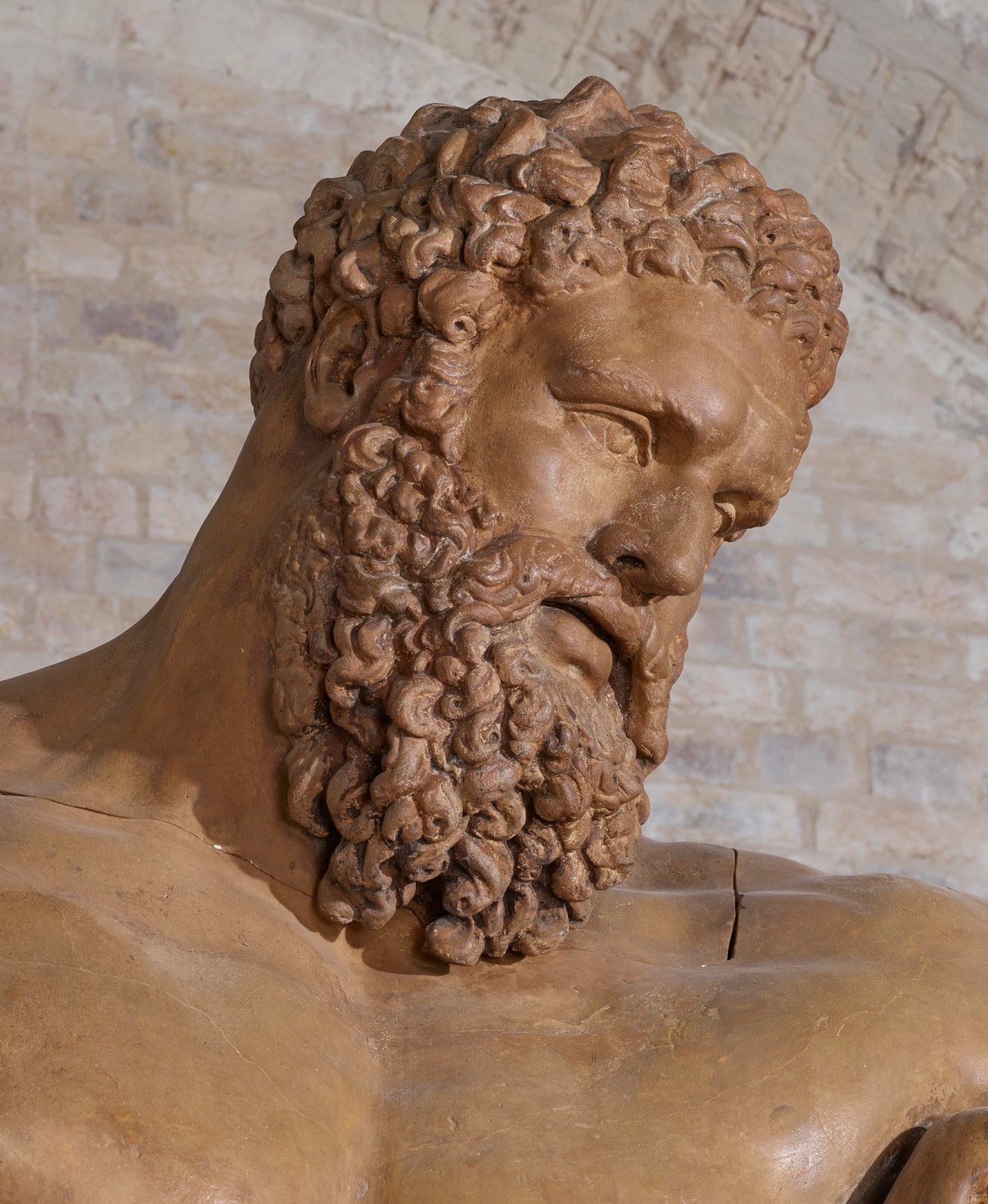
Glycon the Athenian and Lysippus, Cast of the Farnese Hercules, c.1790.
Plaster cast. 3270 mm x 1540 mm x 1150 mm, Weight: 1280 kg. © Photo: Royal Academy of Arts, London. Photographer: Prudence Cuming Associates Limited.
This image is not available to download. To licence this image for commercial purposes, contact our Picture Library at picturelibrary@royalacademy.org.uk
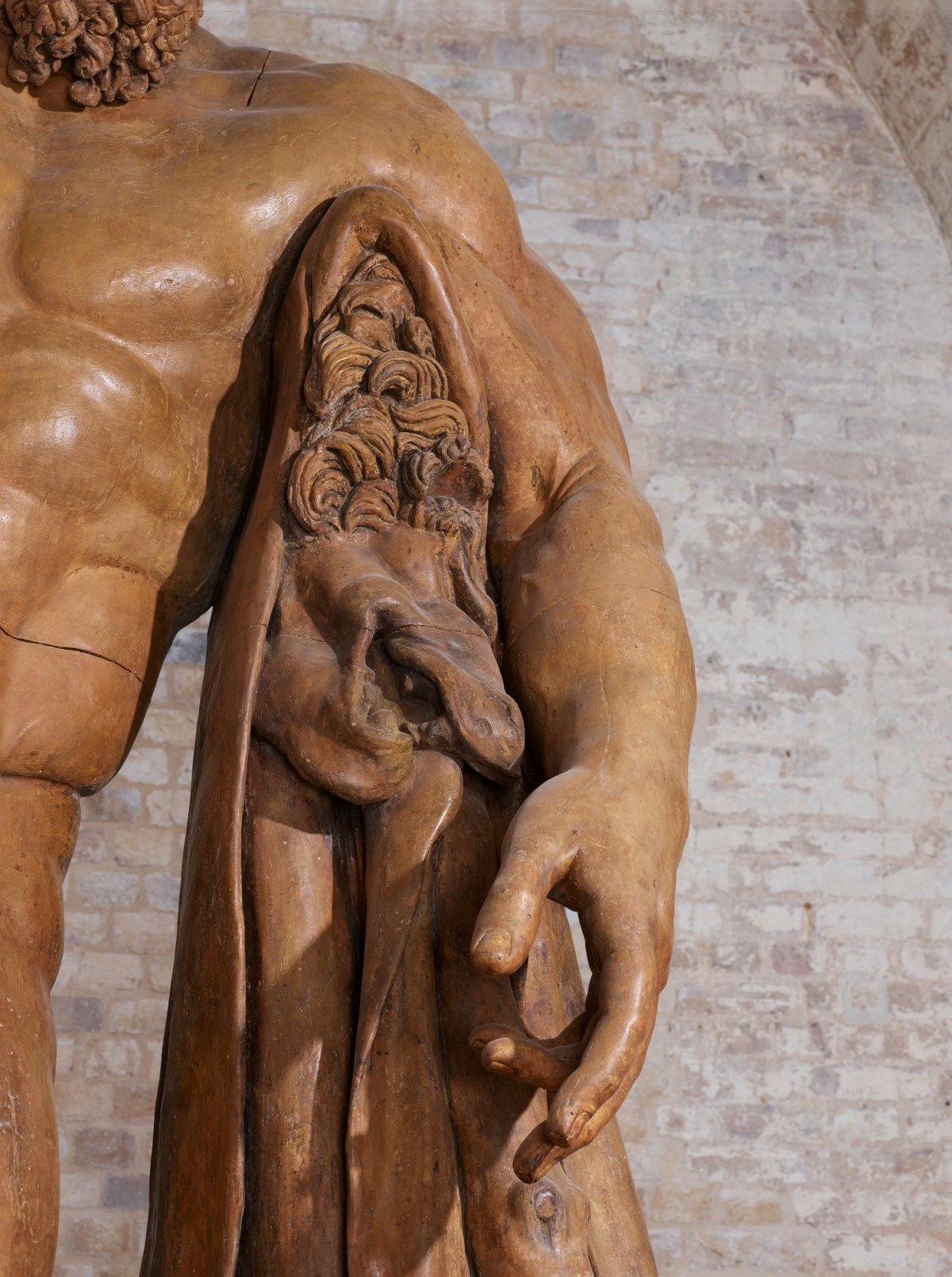
Glycon the Athenian and Lysippus, Cast of the Farnese Hercules, c.1790.
Plaster cast. 3270 mm x 1540 mm x 1150 mm, Weight: 1280 kg. © Photo: Royal Academy of Arts, London. Photographer: Prudence Cuming Associates Limited.
This image is not available to download. To licence this image for commercial purposes, contact our Picture Library at picturelibrary@royalacademy.org.uk
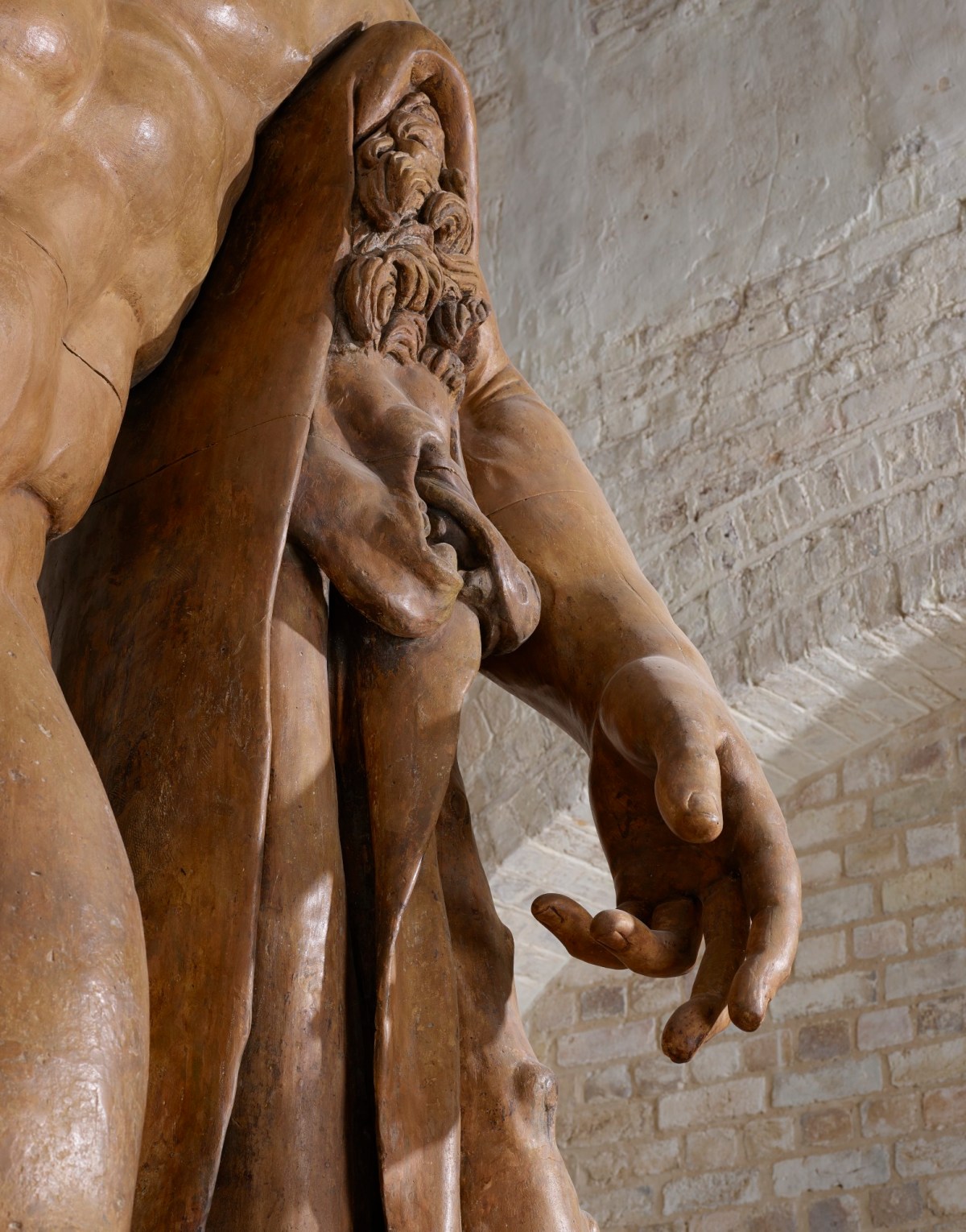
Glycon the Athenian and Lysippus, Cast of the Farnese Hercules, c.1790.
Plaster cast. 3270 mm x 1540 mm x 1150 mm, Weight: 1280 kg. © Photo: Royal Academy of Arts, London. Photographer: Prudence Cuming Associates Limited.
This image is not available to download. To licence this image for commercial purposes, contact our Picture Library at picturelibrary@royalacademy.org.uk

Glycon the Athenian and Lysippus, Cast of the Farnese Hercules, c.1790.
Plaster cast. 3270 mm x 1540 mm x 1150 mm, Weight: 1280 kg. © Photo: Royal Academy of Arts, London. Photographer: Prudence Cuming Associates Limited.
This image is not available to download. To licence this image for commercial purposes, contact our Picture Library at picturelibrary@royalacademy.org.uk
Cast of the Farnese Hercules, c.1790
Glycon the Athenian (b. c. 200 AD-c. 250 AD?) and Lysippus (fl. ca. 370 BC- ca. 300 BC)
RA Collection: Art
On free display in The Julia and Hans Rausing Hall
This cast was made specially for the RA Schools and shipped from Rome in about 1790. It represents the mythological hero Hercules resting on his club with the skin of the Nemean lion draped over it. Hercules killed this beast as the first of his twelve labours.
The original statue was discovered in the Baths of Caracalla in Rome in 1546 and was later installed in a courtyard of the Palazzo Farnese, Rome. Some critics found the physique, with its ‘superfluous masses of muscle’, too developed.
Glycon's Hercules was installed in a courtyard of the Palazzo Farnese and was thus became known as the Farnese Hercules. It shows the hero resting his massive frame upon his club over which is draped the skin of the Nemean lion. Behind his back Hercules holds three of the golden apples which he had stolen from the Garden of the Hesperides. The killing of the Nemean lion was the first of Hercules’s labours, while stealing the apples was one of his last.
This cast was made from a marble sculpture executed by Glycon for the Baths of Caracalla in Rome. The Roman marble was made in the early 3rd century AD and was an enlarged copy of a Greek original by Lysippus, dating from the late 4th century BC. The base of the statue is signed by the artist Glykon. The Greek letters on the base explain that the ‘Athenian sculptor Glykon made him’.
This cast was made especially for the Royal Academy, presumably from moulds that were in Rome as Joseph Bonomi RA was reimbursed just over £36 in Rome for the cast in September 1791. The original Farnese statue was moved to Naples in 1787 with most of the Farnese Collection and is now displayed in the National Archaeological Museum in Naples. The RA cast was shipped back to London by sea from Livorno, Italy. The total cost to the Royal Academy of the cast and the shipping and customs duties was £108.
Once the cast arrived at the Royal Academy it had to be carried up the stairs to the Antique Room at Somerset House. However there were concerns about the safety of the building because of the weight of the sculpture. It was resolved therefore in 1796 to place the Farnese Hercules in the Hall of the Royal Academy which can be seen in an early engraving by George Shepherd of 1810.
The Farnese Hercules is one of the RA Casts which has a metal pin protruding from the lower abdomen on which would have been hung a fig leave when the Academy was open for the Summer Exhibition. There were a furore in the press in 1780 when there was much criticism of the casts remaining uncovered because of 'the shameful state of nudity, to the terror of every decent woman who enters the room'. The Morning Post, 6 May 1780.
Further Reading
Francis Haskell and Nicholas Penny, Taste and the Antique, London and New Haven: Yale University Press, 1981, pp. 229-232
Martin Postle, 'Covered in Ignominy. Scenes of outrage at Somerset House', Country Life, 14 June 1990
Object details
3270 mm x 1540 mm x 1150 mm, Weight: 1280 kg
Start exploring the RA Collection
- Explore art works, paint-smeared palettes, scribbled letters and more...
- Artists and architects have run the RA for 250 years.
Our Collection is a record of them.
